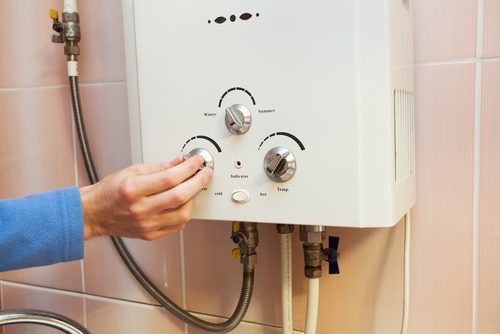Steps to Successfully Care for Your Home's Hot Water System
Steps to Successfully Care for Your Home's Hot Water System
Blog Article
The writer is making a few great points about Tips on Maintaining a Water Heater as a whole in this great article just below.

Hot water is essential for everyday comfort, whether it's for a rejuvenating shower or washing meals. To ensure your warm water system runs efficiently and lasts much longer, regular maintenance is vital. This short article supplies practical ideas and insights on exactly how to maintain your home's hot water system to avoid disruptions and expensive fixings.
Introduction
Keeping your home's hot water system may seem complicated, but with a couple of basic steps, you can ensure it operates efficiently for many years to find. This overview covers whatever from recognizing your hot water system to do it yourself maintenance ideas and knowing when to hire specialist help.
Importance of Preserving Your Warm Water System
Routine maintenance not only expands the lifespan of your hot water system yet also guarantees it runs efficiently. Ignoring upkeep can result in reduced performance, higher energy expenses, and also premature failing of the system.
Signs Your Warm Water System Demands Upkeep
Knowing when your hot water system requires interest can avoid significant problems. Look out for indications such as irregular water temperature, odd sounds from the heating system, or rusty water.
Flushing the Hot Water Heater
Flushing your hot water heater eliminates sediment buildup, boosting effectiveness and lengthening its life.
Monitoring and Replacing Anode Rods
Anode rods avoid rust inside the storage tank. Evaluating and changing them when worn out is essential.
Facility Issues Calling For Specialist Assistance
Instances consist of significant leakages, electrical problems, or if your water heater is consistently underperforming.
Regular Specialist Upkeep Advantages
Professional maintenance can consist of detailed inspections, tune-ups, and ensuring compliance with security requirements.
Examining and Changing Temperature Settings
Adjusting the temperature settings makes certain ideal performance and safety.
DIY Tips for Maintenance
You can perform numerous upkeep jobs yourself to keep your warm water system in leading problem.
Checking for Leakages
Regularly examine pipes and connections for leakages, as these can bring about water damage and higher expenses.
Recognizing Your Warm Water System
Before diving into maintenance jobs, it's practical to comprehend the fundamental components of your hot water system. Commonly, this consists of the water heater itself, pipes, anode poles, and temperature controls.
Month-to-month Maintenance Tasks
Regular monthly checks can aid catch minor concerns prior to they intensify.
Evaluating Stress Alleviation Valves
Evaluating the pressure safety valve ensures it works correctly and prevents too much pressure build-up.
Protecting Pipes
Shielding warm water pipes reduces warmth loss and can save energy.
When to Call an Expert
While do it yourself maintenance is beneficial, some problems require specialist competence.
Conclusion
Routine maintenance of your home's warm water system is vital for performance, durability, and cost financial savings. By following these ideas and knowing when to look for specialist assistance, you can ensure a trusted supply of warm water without unexpected disturbances.
How to Maintain an Instant Hot Water Heater
Before tinkering with your hot water heater, make sure that it’s not powered on. You also have to turn off the main circuit breaker and shut off the main gas line to prevent accidents. Also turn off the water valves connected to your unit to prevent water from flowing into and out of the appliance. 2. When you’re done, you have to detach the purge valves’ caps. These look like the letter “T†and are situated on either side of the water valves. Doing so will release any pressure that has accumulated inside the valves while at the same time avoid hot water from shooting out and burning your skin. 3. When the purge valves’ caps are removed, you have to connect your hosing lines to the valves. Your unit should have come with three hoses but if it didn’t, you can purchase these things from any hardware or home repair shops. You can also get them from retail stores that sell water heating systems. Read the user’s manual and follow it to complete this task properly. When the hosing lines are connected, open the purge port’s valves. 4. You should never use harsh chemical cleaners or solutions when cleaning your unit. Make use of white vinegar instead. It should be undiluted and you’ll probably use about 2 gallons. 5. Now flush your water heater. This task should probably take about 40 minutes. We can’t give you specific directions for this because the procedure is carried out depending on the type, model and brand of your heater. With that being said, refer to the user’s manual. 6. When you’re done draining the unit, you have to turn off the purge port valves again. Remove the hosing lines that you earlier installed on each of the water valves. Put the valve caps (purge port) back in their respective places and be very careful so as not to damage the rubber discs that are found inside these caps. 7. Now that everything’s back in place, check your user’s manual again to find out how to reactivate your water heating system. 8. Once it is working, turn one of your hot water faucets on just to let air pass through the heater’s water supply pipes. Leave the tap on until water flows smoothly out of it. https://www.orrplumbing.com/blog/2014/september/how-to-maintain-an-instant-hot-water-heater/

I found that entry about What Kind of Maintenance Do Water Heaters Need? when doing a search on the internet. Are you aware of anybody else who is interested in the niche? Do not hesitate to promote it. Thanks a bunch for being here. Don't hesitate to come by our website back soon.
Book Today Report this page